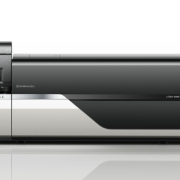Triple quadrupole mass spectrometer
The LCMS-8060 triple quadrupole mass spectrometer is designed to push the limits of LC/MS/MS quantitation for applications requiring the highest sensitivity and robustness while delivering a meaningful solution for routine LC/MS/MS analyses. It detects substances at ultra-trace level as they occur in complex matrices for example, or in smallest sample concentrations which have to be diluted in order to avoid matrix effects. The LCMS-8060 is the newest member of Shimadzu’s UFMS (Ultra-Fast Mass Spectrometry) family and part of the Shimadzu mass spectrometry platform of MS/MS systems with ultra-fast technologies. The system combines a heated ESI source with all UF technologies including UFsweeper III, a collision cell filled with argon gas. Through its high speed technology, UFsweeper III achieves dwell times of 0.8 ms per MRM. With new UF Qarray ion guide technology increasing ion production and signal intensity, the LCMS-8060 introduces a new level of sensitivity and makes a real difference to working better and faster. The system features a data acquisition scan speed of 30,000 u/sec and a polarity switching time of 5 msec. The newly developed UF Qarray boosts ion sensitivity while suppressing noise. By improving the ion sampling device, ion guide and vacuum efficiency, the instrument achieves unprecedented sensitivity in LCMS. Shimadzu’s proprietary technologies allow acquisition of up to 555 MRM channels per second, ultra-fast polarity switching and ultra-fast scanning, all with highest data quality. Robustness of the LCMS-8060 and modified ion optics was assessed by injecting 2,400 samples of femtogram levels of alprazolam spiked into protein-precipitated human plasma extracts over a six day period (over 400 samples were injected each day). RSD of peak area response was 5 % over this test period, and use of a deuterated internal standard (alprazolam-d5) led to RSD of 3.5 %. As part of the robustness test the vacuum system was vented to model a transient power failure, with however no effect on signal response or baseline noise level.



